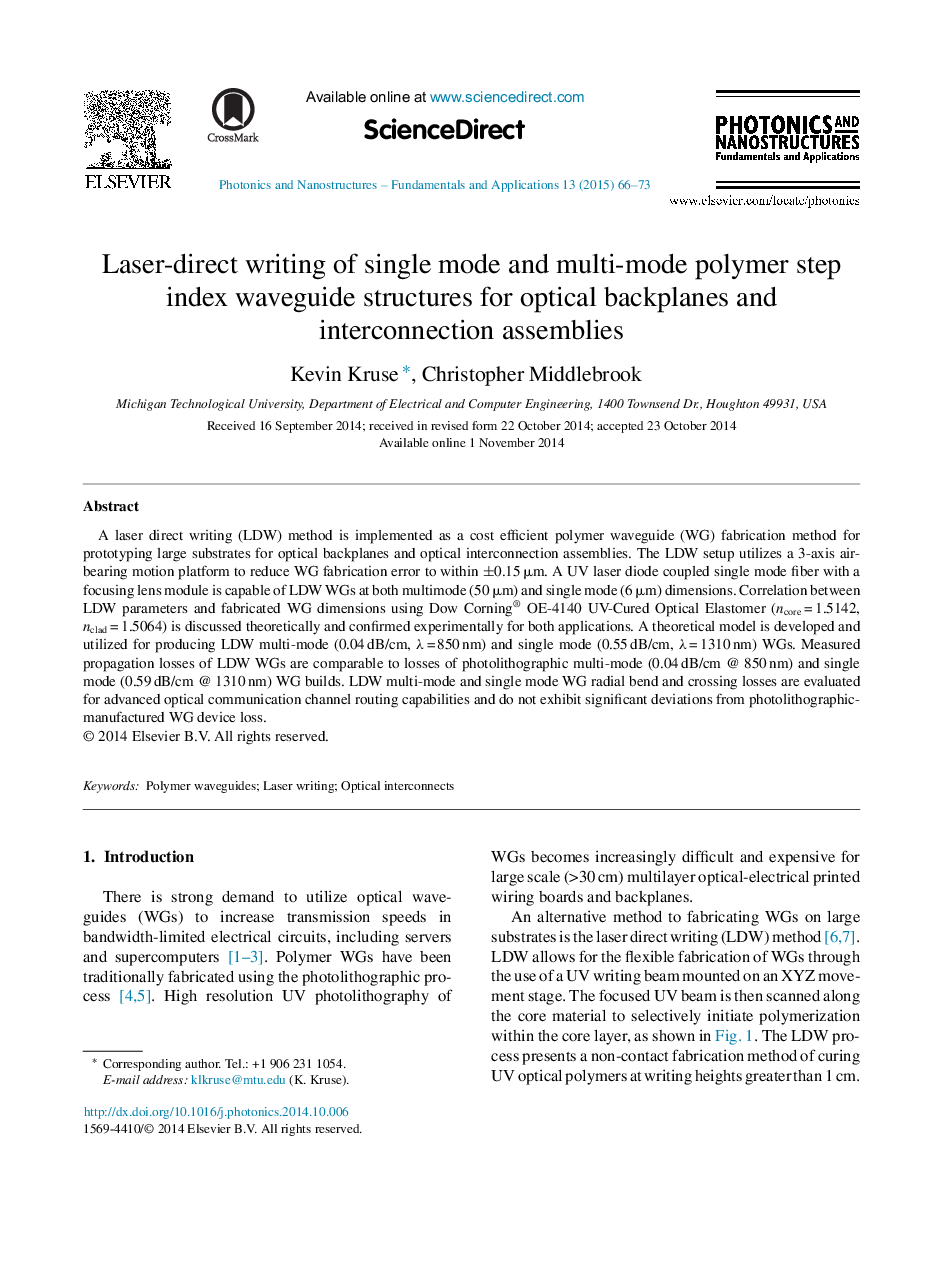| Article ID | Journal | Published Year | Pages | File Type |
|---|---|---|---|---|
| 1543276 | Photonics and Nanostructures - Fundamentals and Applications | 2015 | 8 Pages |
•The design and functionality of the LDW method is proposed and detailed as a flexible, cost-effective method of fabricating polymer WGs.•A theoretical model to correlate LDW parameters to fabricated WG dimensions is described and proven experimentally.•Low loss polymer waveguide straights, bends, and crossings for both singlemode and multi-mode functionality are fabricated with the LDW process.•LDW WG devices are evaluated to be similar in functionality to photolithography WG devices.
A laser direct writing (LDW) method is implemented as a cost efficient polymer waveguide (WG) fabrication method for prototyping large substrates for optical backplanes and optical interconnection assemblies. The LDW setup utilizes a 3-axis air-bearing motion platform to reduce WG fabrication error to within ±0.15 μm. A UV laser diode coupled single mode fiber with a focusing lens module is capable of LDW WGs at both multimode (50 μm) and single mode (6 μm) dimensions. Correlation between LDW parameters and fabricated WG dimensions using Dow Corning® OE-4140 UV-Cured Optical Elastomer (ncore = 1.5142, nclad = 1.5064) is discussed theoretically and confirmed experimentally for both applications. A theoretical model is developed and utilized for producing LDW multi-mode (0.04 dB/cm, λ = 850 nm) and single mode (0.55 dB/cm, λ = 1310 nm) WGs. Measured propagation losses of LDW WGs are comparable to losses of photolithographic multi-mode (0.04 dB/cm @ 850 nm) and single mode (0.59 dB/cm @ 1310 nm) WG builds. LDW multi-mode and single mode WG radial bend and crossing losses are evaluated for advanced optical communication channel routing capabilities and do not exhibit significant deviations from photolithographic-manufactured WG device loss.
